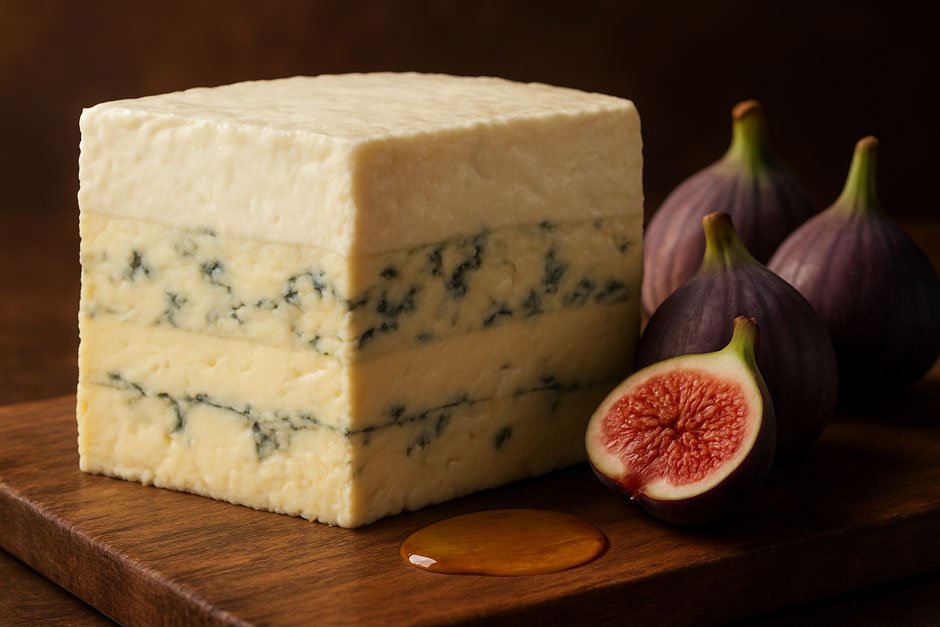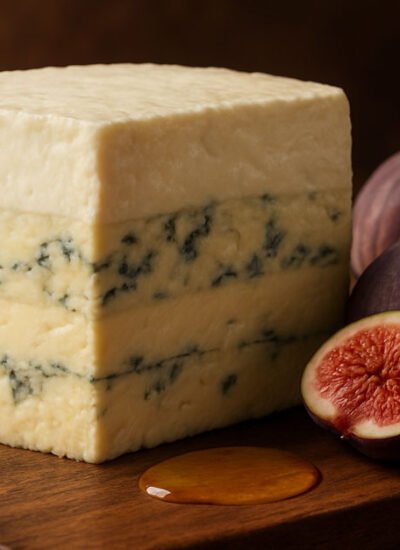 In the vast and storied landscape of Italian gastronomy, a relatively modern creation has captured the attention of cheese connoisseurs: Masgonzola. This delicacy is not merely a new variety but a masterful fusion, a testament to the enduring creativity of Italian cheesemakers.
In the vast and storied landscape of Italian gastronomy, a relatively modern creation has captured the attention of cheese connoisseurs: Masgonzola. This delicacy is not merely a new variety but a masterful fusion, a testament to the enduring creativity of Italian cheesemakers.
It represents a perfect marriage of two beloved classics, offering a flavor profile that is both familiar and excitingly new. For those seeking an elevated experience on their next cheese board, Masgonzola promises a journey of creamy, tangy indulgence.
The Art of Fusion: What Exactly is Masgonzola?
Masgonzola is a layered, semi-soft Italian cheese. Its name is a portmanteau, clearly indicating its dual composition: the “Mas” comes from Mascarpone, and the “gonzola” is derived from Gorgonzola Dolce.
The cheese is typically crafted by spreading fresh, cloud-like Mascarpone—a rich, buttery cream cheese—between slabs of the milder, younger Gorgonzola Dolce.
This careful layering process is what defines Masgonzola, creating a striking visual contrast and a complex, harmonious flavor that cannot be achieved by simply mixing the two.
A Taste of Lombardy: The Origins and Craftsmanship
The story of Masgonzola is rooted in the picturesque Lombardy region of Northern Italy. This area is already famous as the birthplace of Gorgonzola, one of the world’s oldest blue cheeses.
Artisan producers in Lombardy, drawing on centuries of dairy expertise, began experimenting with this fusion to create a more approachable blue cheese experience.
The craftsmanship involves selecting high-quality, fresh Mascarpone and a young Gorgonzola Dolce, which is aged for only about 50 days to maintain its creamy texture and subtle tang.
The two components are then gently pressed together and allowed to age briefly, allowing their distinct characteristics to meld without losing their individual identities. This process is a true labor of love, requiring precision and patience.
A Symphony of Flavors: Unpacking the Masgonzola Profile
The true magic of Masgonzola lies in its flavor experience, which is a delightful balance of contrasting textures and tastes.
Upon the first bite, the palate is greeted by the velvet embrace of the Mascarpone. This layer provides a gentle sweetness and an unparalleled creaminess that coats the mouth.
Immediately following is the subtle, mellow tang of the Gorgonzola Dolce. Unlike sharper blue cheeses, the Gorgonzola component here is mild, offering a delicate pungency and a hint of earthy notes.
The overall profile is smooth, rich, and utterly non-confrontational. It is an ideal cheese for those who appreciate the complexity of blue cheese but prefer a softer, more indulgent finish.
The Difference Between Masgonzola and Gorgonzola
While Gorgonzola is a key ingredient, Masgonzola is fundamentally different. Gorgonzola, even the Dolce variety, is a pure blue cheese with a consistent texture and flavor throughout.
Masgonzola, by contrast, is a composite. The inclusion of the sweet, non-veined Mascarpone dramatically reduces the overall intensity and introduces a distinct, layered mouthfeel.
From Cheese Board to Kitchen: Serving and Pairing Masgonzola
Masgonzola’s versatility makes it a star both on its own and as an ingredient. To fully appreciate its texture, it should be brought to room temperature about 30 minutes before serving.
Its layered appearance is best showcased when sliced cleanly, revealing the beautiful marbling of blue and white.
Perfect Pairings
The cheese pairs exceptionally well with sweet and crunchy elements. Fresh fruits like figs, pears, and grapes offer a refreshing counterpoint to its richness.
A drizzle of high-quality acacia honey or a sprinkle of toasted walnuts can amplify the subtle sweetness of the Mascarpone layer.
For wine pairings, a rich, full-bodied red like a Chianti or a Barolo works beautifully, as does a sweet dessert wine such as a late-harvest Riesling, which mirrors the cheese’s dual nature.
Culinary Creativity: Incorporating Masgonzola into Recipes
Beyond the charcuterie board, Masgonzola is a powerful tool in the modern kitchen, capable of transforming simple dishes into gourmet experiences.
It melts beautifully, making it an excellent addition to creamy sauces. Stirring a few cubes into a freshly made risotto just before serving creates a silky, tangy finish that is deeply satisfying.
Chefs also utilize it to elevate baked goods. A gourmet pizza topped with Masgonzola, caramelized onions, and prosciutto is a decadent treat where the cheese’s richness shines.
It can also be used as a luxurious stuffing for fresh pasta, such as ravioli or tortellini, providing a sophisticated, creamy filling that is far milder than a pure blue cheese.
Beyond the Bite: Why Masgonzola is a Must-Try Italian Delicacy
Masgonzola is more than just a culinary trend; it is a celebration of Italian ingenuity. It takes the traditional, time-honored flavors of Lombardy and presents them in a new, accessible, and luxurious format.
Its balanced profile—the smooth creaminess against the gentle tang—makes it a perfect entry point for those new to blue cheeses, while still satisfying the most seasoned palates.
For anyone looking to explore the depth and diversity of Italian dairy products, Masgonzola offers an unforgettable taste of indulgence and craftsmanship. It truly redefines what a fusion cheese can be.





Leave a Reply